The OLED display market is now an established market with over $10 billion in annual revenue. OLEDs are mostly used in mobile devices - over 300 million AMOLED panels were produced in 2016, most of them used in smartphones. OLED panels are also used in TVs, tablets, smartwatches, laptops and VR headsets.
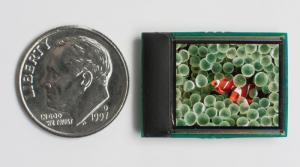
Back in 2001, eMagin started offering OLED microdisplays, which are tiny displays fabricated directly on the silicon control circuitry (on the CMOS). Since 2001, the OLED microdisplay market is growing slowly and these high-end microdisplays are mostly used in defense, medical and industrial applications due to their high cost. Many high-end digital cameras also use OLED microdisplays for their electronic viewfinder (EVF).
OLED microdisplays were always being considered (and sometimes used) for VR and AR headsets. In the past years, as VR and AR gain in popularity, the interest is growing in OLED microdisplays for these markets - as microdisplays can enable smaller, higher perfoming and more efficient designs. In this article we'll look into the major players in this market.
So first up we have eMagin, the OLED Microdisplay pioneer. As we said, eMagin has been producing OLED microdisplays since 2001, mostly for the defense, medical and industrial sector. eMagin's microdisplays range from VGA to WUXGA (1920x1200) displays, in monochrome of full-color.
eMagin is also developing OLED microdisplays for the consumer VR market and has started shipping 2k x 2k microdisplays in 2017. In December 2014 the company announced a VR HMD design that uses these displays and have since signed up a first customer that licensed the technology.
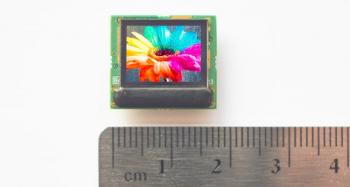
eMagin is progressing towards a direct-emission OLED microdisplay design. Most OLED microdisplays use a white OLED with color filters, which is an easier design to produce but it results in a large decrease in brightness and efficiency (due to the light lost in the filters). The company hopes to be able to start producing these displays in 2017. eMagin is collaborating with AMD for around two years now, but the nature of this collaboration is not public yet.
Sony started producing OLED microdisplays in 2011, and the company is now shipping several such displays, ranging from nHD+ (640x400) to Full-HD (1920x1080) displays. Sony's displays were adopted in the company's own HMDs (the HMZ-T family) and also in many digital cameras by Sony, Panasonic, Nikon Fujifilm and others.
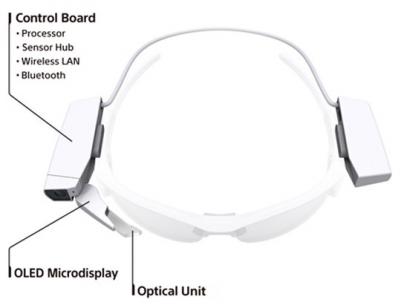
In June 2014, Sony announced a new OLED microdisplay - its smallest one yet at 0.23. This 640x400 (nHD+) display is aimed for wearable devices. The 0.23" microdisplay has been adopted in Sony's own SmartEyeglass Attach prototype. It is also likely that Sony's 720p microdisplays are used in ODG's latest OLED AR smartglasses.
MicroOLED is a privately-held company based in Grenoble, France that was spun-off from the French CEA-LETi research institute in 2007. MicroOLED designs and produces high-performance OLED microdisplays for near-to-eye applications such as camera EVF, video eyewear, sport optics, defense and medical.
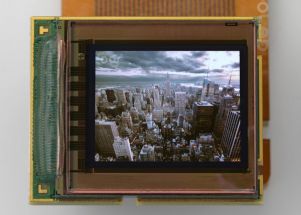
MicroOLED currently ships three microdisplays families - a 0.38" WVGA, 0.39" XGA and 0.61" SXGA. The company adjusts displays in their fab according to requirements of the customer, so that there's no need to do any adjustment to integrate the display (white balance, non-linear gamma correction, temperature correction, etc.).
According to our guesstimate, MicroOLED's displays are used in Fujifilm's latest GFX-50S high end camera. MicroOLED is also part of a European project that aims to develop a 1-inch WUXGA flexible OLED microdisplay. In April 2016 MicroOLED announced that it shipped over 150,000 WVGA microdisplays.
OLiGHTEK (the full company name is Yunnan North OLiGHTEK Opto-Electronic Technology Co) is a Chinese based company that develops and produces AMOLED microdisplays, drivers, evaluation boards and optics. OLiGHTEK are currently offering four microdisplays in SVGA and SXGA resolutions.
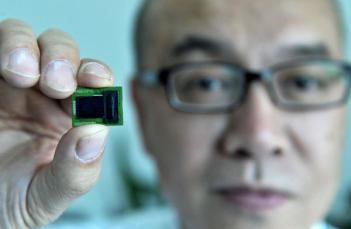
OLiGHTEK does not share its customer base, but in 2012 it did say that the Eye Book HMD launched China uses two of its SVGA Displays. OLiGHTEK shipped over 15,000 microdisplays to this product alone.
Kopin, an established LCoS microdisplay maker, unveiled its first OLED microdisplay in CES 2017. The Lightning microdisplay features a 2048 x 2048 resolution (2k x 2k) at 1" diagonal and a fast refresh rate of 120 Hz. Kopin specifically targets VR applications for this new microdisplay.
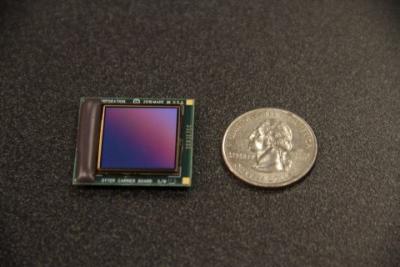
Kopin did not yet reveal when this new display is expected to ship. Kopin's business model is unique to the OLED microdisplay market - the company is outsourcing both the silicon backplane production and the OLED emissive layer deposition.
While eMagin, Sony, MicroOLED, OLiGHTEK and Kopin are the current leaders in the OLED microdisplay market, there are other players as well - including Epson (who claims to produce its own displays used in the Moverio BT-300 AR headset), Dresden Microdisplays and others.
For a complete comprehensive view of the OLED microdisplay market, consult our OLED microdisplay market report. OLED-Info's premium users are entitled for a 10% discount on all our reports.

